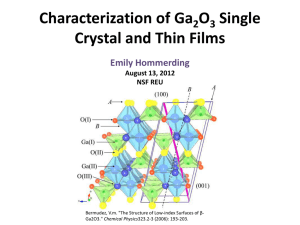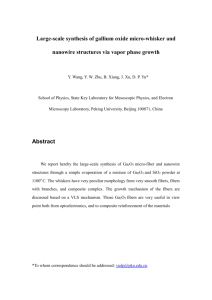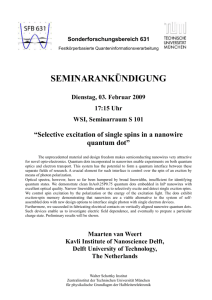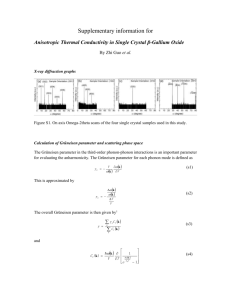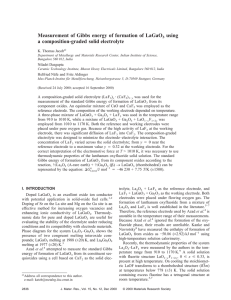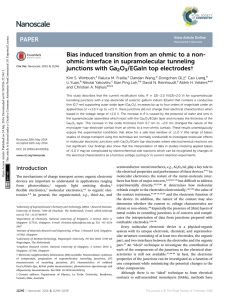Ga2O3 Nanowire: FET Fabrication and Electrical Transport
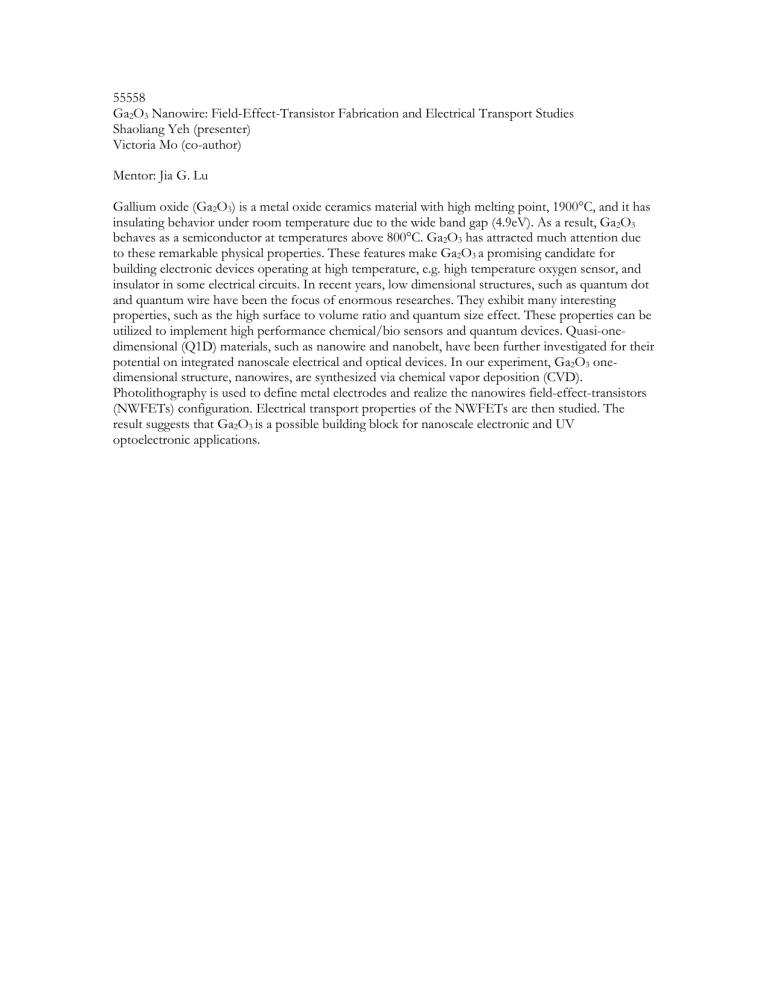
55558
Ga
2
O
3
Nanowire: Field-Effect-Transistor Fabrication and Electrical Transport Studies
Shaoliang Yeh (presenter)
Victoria Mo (co-author)
Mentor: Jia G. Lu
Gallium oxide (Ga
2
O
3
) is a metal oxide ceramics material with high melting point, 1900°C, and it has
2
O
3 insulating behavior under room temperature due to the wide band gap (4.9eV). As a result, Ga behaves as a semiconductor at temperatures above 800°C. Ga
2
O
3
has attracted much attention due to these remarkable physical properties. These features make Ga
2
O
3 a promising candidate for building electronic devices operating at high temperature, e.g. high temperature oxygen sensor, and insulator in some electrical circuits. In recent years, low dimensional structures, such as quantum dot and quantum wire have been the focus of enormous researches. They exhibit many interesting properties, such as the high surface to volume ratio and quantum size effect. These properties can be utilized to implement high performance chemical/bio sensors and quantum devices. Quasi-onedimensional (Q1D) materials, such as nanowire and nanobelt, have been further investigated for their potential on integrated nanoscale electrical and optical devices. In our experiment, Ga
2
O
3
onedimensional structure, nanowires, are synthesized via chemical vapor deposition (CVD).
Photolithography is used to define metal electrodes and realize the nanowires field-effect-transistors
(NWFETs) configuration. Electrical transport properties of the NWFETs are then studied. The result suggests that Ga
2
O
3 is a possible building block for nanoscale electronic and UV optoelectronic applications.


